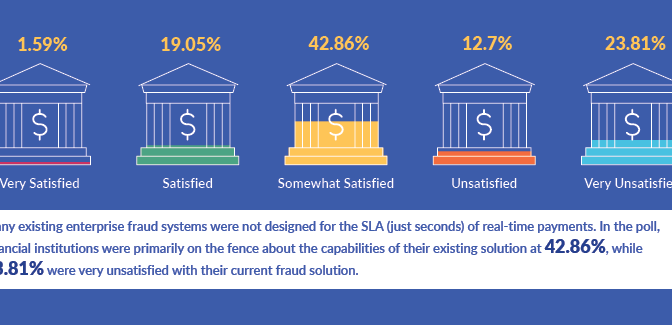The term ‘payments hub’ is commonly used in the financial services industry. A payments hub represents the central nervous system of a financial institution’s payment processing capabilities. This technology acts as a fulcrum for various payment methods, facilitating seamless transactions across different rails, such as ACH, the RTP® network, the FedNow® Service, and wire transfers. However, the definition of ‘payments hub’ can significantly vary depending on the source.
Traditional products in the market tend to focus on specific rails, providing infrastructure to connect with services like the Federal Reserve Banks for FedNow or The Clearing House for RTP. These solutions include message generation, parsing, delivery, network compliance, and, sometimes, basic posting capabilities. Yet, they may lack comprehensive operations or the ability to automate and orchestrate end-to-end processes within and across rails.
Alacriti’s approach goes beyond just transactional capabilities; it brings forth a comprehensive suite of operations. We sat down with Praveen Vinnakota, our Senior Vice President and Payments Platform Lead, to discuss what ‘payments hub’ means at Alacriti.
Q: Praveen, can you start by telling us what a payments hub is, especially in comparison to individual payment rail products such as ACH or wire?
A: Yes. Typically, when you buy a payment product like ACH or wires, you’re getting specific functionalities. But a payments hub encompasses those individual rails, offering a centralized system that addresses a wider array of functions, like rule-based orchestration, automation, routing, business rules and fraud checks aggregation, compliance, and message translation.
Q: What are the advantages of a centralized operations capability?
A: It allows for real-time interaction with payments as they’re processed and sophisticated reporting that isn’t just after-the-fact data dumps. It provides visibility and control over transactions across different payment rails within one interface. Additional operational advantages include automating risk checks, enhancing liquidity management, and facilitating easier reconciliation. This turns a financial institution’s payment processing from a potentially cumbersome, siloed operation into a streamlined, efficient, and centralized model.
Q: So what differentiates Alacriti’s payments hub from a product that enables processing for a single payment rail like ACH or RTP?
A: With Alacriti, we don’t just sell a single rail; we provide a comprehensive payments hub that includes all necessary functionalities. This means we:
- Offer the infrastructure for connecting to payment networks
- Offer the infrastructure for connecting to your existing banking systems
- Ensure network compliance
- Include message types and validations that go beyond just basic posting
- Provide you cross-rail visibility, reporting, and analytics
Q: How is Alacriti’s payments hub different overall?
A: What sets Alacriti’s payments hub apart is its inherent flexibility. For instance, in transaction processing, it can distinguish between virtual and physical accounts, manage business rules on the fly, and even engage with directory services for methods like Zelle or PayPal. Moreover, the system is designed to maximize STP (Straight-through processing) rates, which is especially critical for instant payments like RTP.
Q: Could you elaborate on the specific functions that are included with Alacriti’s payments hub?
A: We offer the following features:
- Orchestration and Automation: It can connect and automate different services in a rule-based, configurable framework, significantly reducing manual processes.
- Routing Decisioning: It allows for the smart directing of payments based on various contexts, a feature that becomes increasingly crucial as financial institutions work with multiple rails, each with its own rules, limits, and hours of operation.
- Operations and Reporting: Alacriti’s solution provides centralized operations with real-time transaction and rails visibility and responsive reporting capabilities.
- Integrations: It supports comprehensive integration with a multitude of systems, including online banking, core systems for posting, and data lakes for analytics.
In short: our payments hub includes rule-based orchestration, routing, compliance adherence, integrated fraud and risk checks, exception resolution, etc. We handle network certifications, various message types for different rails, and validations to ensure transactions are correct. We also embed functions that would typically be separate, creating a seamless and integrated experience.
Q: How does Alacriti’s payments hub manage exceptions and operations?
A: Unlike basic rail solutions, our hub has sophisticated exception handling and centralized operations. We provide stand-in processing, support rule-based rejects and returns, auto post reversals, and intelligently manage retries and exceptions in real-time, offering a robust and dynamic system that goes beyond the capabilities of individual rail products.
Q: When a financial institution uses Alacriti to connect only to RTP or FedNow, are they essentially using the payments hub as well?
A: Exactly. Even if you implement one rail, like RTP or FedNow, it’s delivered with our hub’s capabilities. We don’t just offer the rail; we offer a full payment solution. Our payments hub benefits the client by improving the payment process and overall operational efficiency, allowing them to easily modernize their payment systems at their own pace.
Q: If you just have one rail on Alacriti’s payments hub, why is it easy to add new rails?
A: Think of Alacriti’s payments hub like a set of building blocks. Even if a bank starts by choosing only one type of block, like RTP or FedNow, which are just different ways to move money quickly, they still get the whole box of blocks to play with. If, later on, they decide they want to add more blocks to their construction (which means using different ways to send money), they can easily snap on these new pieces without having to rebuild everything from scratch. It’s designed to be easy to add what they need when they need it.
Q: What additional value does the payments hub bring to a single rail like wires?
A: Even with a single rail, the hub adds immense value by integrating various functions and systems. It makes the entire payments process more efficient, whether that’s through better exception handling, automated integrated document management, streamlined operations, or more intelligent routing. For example, we can bring fraud and AML data into the transaction level and integrate with digital banking providers for fully automated self-service wires and a unified agent room for all wire operations.
Q: You mentioned operational efficiencies with wire. Can you give a specific example?
A: With our hub, for instance, we can automate wire transactions that used to take 30 minutes per wire manually. This automation not only speeds up transactions and reduces the chances for human errors but also improves the member experience—which is critical for financial institutions.
Q: We have some very large clients, such as Navy Federal Credit Union. How are you able to tailor Alacriti’s payments hub with huge financial institutions?
A: Our flexibility allows us to integrate with systems effectively. We are able to automate processes that would otherwise be manual and time-consuming, saving a significant amount of operational time and resources.
With increasing demand for instant payments and enhanced user experiences, Alacriti’s payments hub positions itself as not just an option but a necessity for financial institutions aiming to stay at the forefront of innovation and customer satisfaction. The payments hub offers not just an operational tool but a strategic asset, enabling banks and credit unions to enhance their service delivery and operational efficiencies significantly.
Learn how to evaluate payments hub vendors in our buyer’s guide: Payments Hub Comparison Template: How to Evaluate Vendors.
Alacriti’s centralized payment platform, Orbipay Payments Hub, provides innovation opportunities and the ability to make smart routing decisions at the financial institution to meet their individual needs. Financial institutions can take full ownership of their payments and control their evolution with ACH, Wire, TCH’s RTP® network, Visa Direct, and the FedNow® Service, all on one cloud-based platform. To speak with an Alacriti payments expert, please contact us at (908) 791-2916 or info@alacriti.com.























